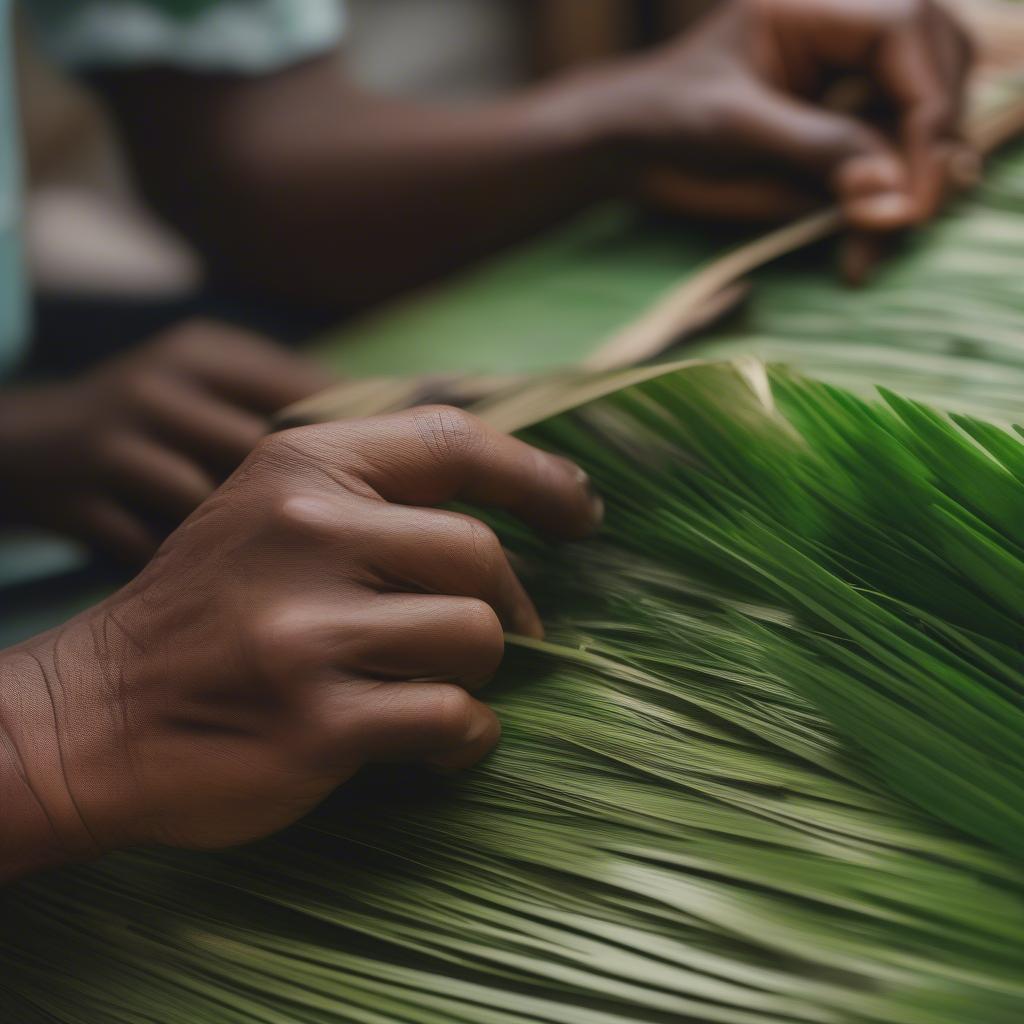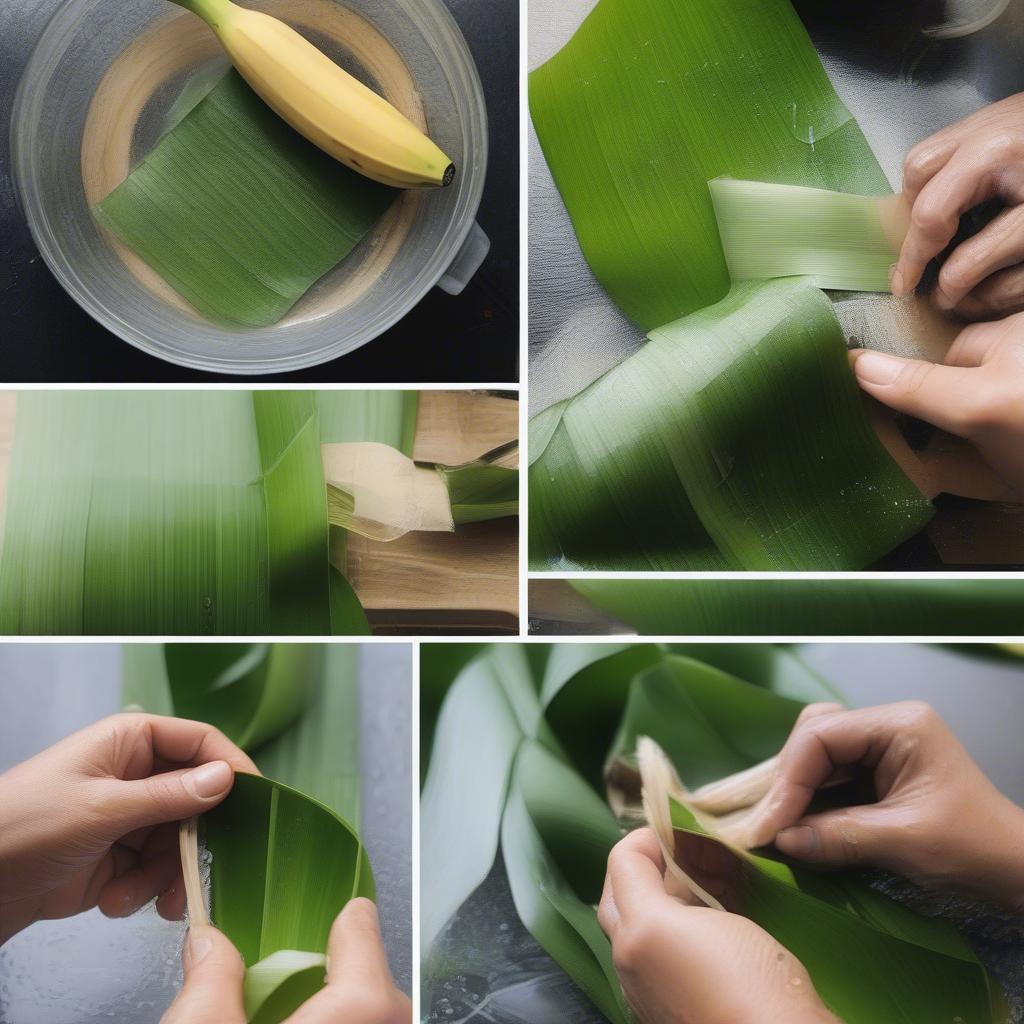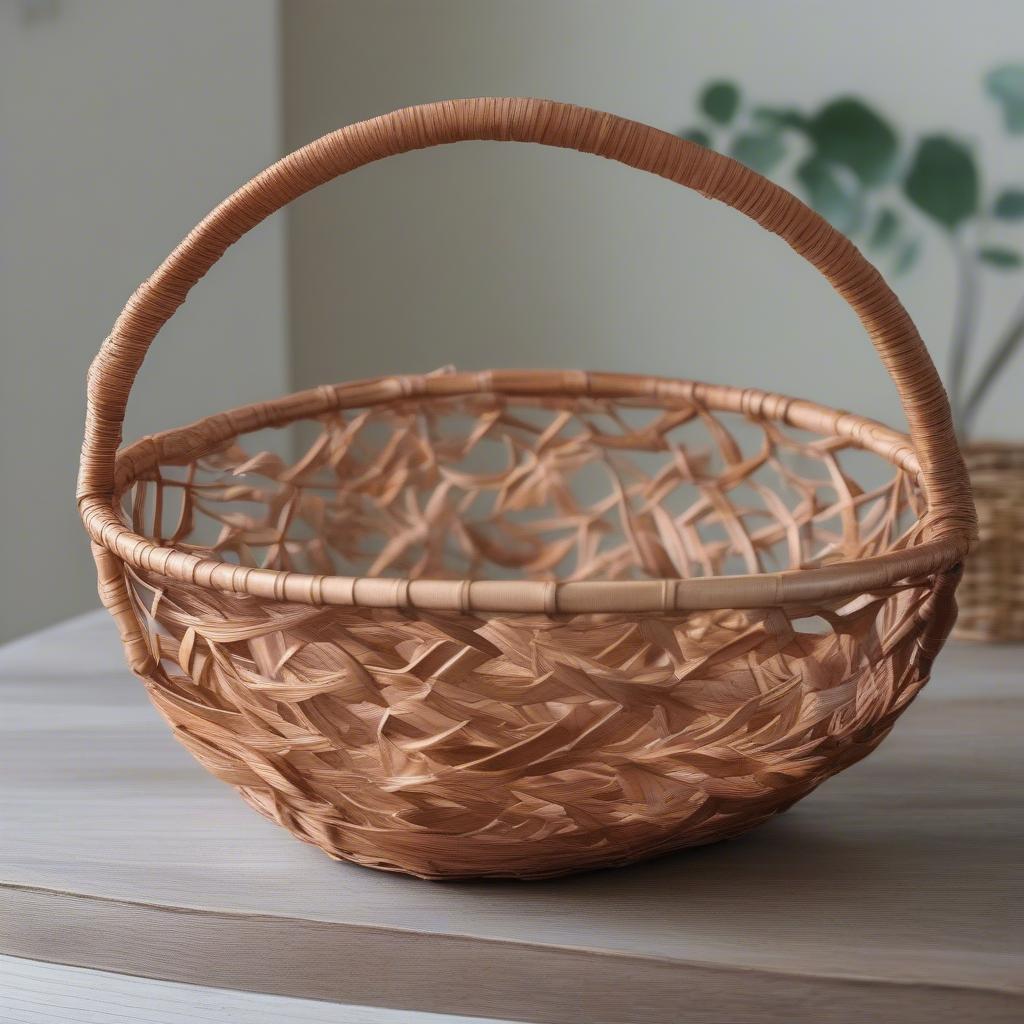Basket Weaving
Materials for Leaf Basket Weaving: A Comprehensive Guide
Leaf basket weaving, an ancient craft, offers a beautiful and sustainable way to create functional art. From gathering the right leaves to mastering essential techniques, understanding the materials is crucial. This guide dives deep into the world of leaf basket weaving materials, providing insights and tips for both beginners and experienced artisans.  Palm leaves being prepared for basket weaving
Palm leaves being prepared for basket weaving
Choosing the Right Leaves for Your Basket
The type of leaf you choose significantly impacts the final look, durability, and overall feel of your basket. Some leaves offer strength and rigidity, while others lend a softer, more pliable texture. Consider these popular options:
- Palm Leaves: Known for their durability and availability in tropical regions, palm leaves are a classic choice. They create sturdy baskets ideal for everyday use.
- Banana Leaves: Larger and more pliable than palm leaves, banana leaves offer a unique aesthetic. Their broad surface allows for creating larger baskets and intricate designs.
- Corn Husks: Dried corn husks add a rustic charm to baskets. They are readily available in many areas and are easy to work with, especially for beginners.
- Other Leaves: Explore local flora! Experiment with leaves from trees like willow, oak, or maple. Each type brings its own unique characteristics to your weaving.
Understanding the properties of each leaf is key to achieving desired results. Do you need a basket that can hold heavy items? Palm might be your best bet. Looking for a more decorative piece? Consider the delicate beauty of banana leaves or the rustic texture of corn husks.
Preparing Leaves for Weaving
Once you’ve selected your leaves, proper preparation is crucial. This involves several steps:
- Harvesting: Gather leaves at their peak, when they are still green and supple. Avoid damaged or diseased leaves.
- Drying: Dry the leaves thoroughly to prevent mold and rot. Lay them flat in a well-ventilated area, away from direct sunlight.
- Softening: Soaking dried leaves in warm water makes them more pliable and easier to weave with.
- Cutting/Splitting: Depending on the leaf type and desired basket design, you might need to cut or split the leaves into strips.
Remember, preparing the leaves correctly ensures they remain flexible and strong throughout the weaving process.  Preparing banana leaves for weaving a basket If you’re working with waxed linen thread basket weaving, you might want to consider incorporating leaf elements for a unique touch.
Preparing banana leaves for weaving a basket If you’re working with waxed linen thread basket weaving, you might want to consider incorporating leaf elements for a unique touch.
Beyond the Leaves: Supplementary Materials
While leaves form the core of your basket, other materials can enhance its functionality and aesthetics:
- Framing Materials: Sturdier materials like bamboo or willow can create a strong frame for your leaf basket. This is especially helpful for larger baskets or those intended for heavier items.
- Decorative Elements: Consider adding natural dyes, beads, or other embellishments to personalize your basket.
- Thread or Cord: Use natural fibers like raffia or hemp to bind and reinforce the woven structure.
These supplementary materials not only strengthen the basket but also add a layer of artistry and individuality.
Weaving Techniques and Leaf Basket Styles
Different weaving techniques work best with different leaf types. Exploring various techniques, from coiling to plaiting, allows you to create a wide range of basket styles, from simple and functional to intricate and decorative. Have you ever wondered when did basket weaving start? The history is fascinating! Basket weaving has been a vital part of human culture for centuries, offering a sustainable and creative way to create essential items.
Leaf Basket Care and Maintenance
Proper care ensures the longevity of your leaf basket. Avoid exposing it to excessive moisture or direct sunlight, which can cause fading and damage. Store your basket in a cool, dry place to preserve its beauty and functionality.  A completed leaf basket If you’re interested in basket weaving in bahrain wikipedia, you’ll find this region has a rich tradition of basket making.
A completed leaf basket If you’re interested in basket weaving in bahrain wikipedia, you’ll find this region has a rich tradition of basket making.
Conclusion
Selecting the right Materials For Leaf Basket Weaving is the first step towards crafting a beautiful and functional piece. From the type of leaf to supplementary materials and weaving techniques, each choice influences the final result. By understanding the properties of different materials and employing proper preparation and care techniques, you can create stunning, sustainable baskets that will last for years to come. Now that you have a better understanding of materials for leaf basket weaving, why not give it a try? You can even order basket weaving pine needles if you want to explore different materials. Or perhaps you are looking for something special like a beelk basket weave shamrock jewelry box?
FAQ
- What are the best leaves for beginners to use for basket weaving?
- How long do leaf baskets typically last?
- Can I dye leaves for basket weaving?
- What are the basic weaving techniques for leaf baskets?
- Where can I find materials for leaf basket weaving?
- How do I clean a leaf basket?
- What are some common mistakes to avoid in leaf basket weaving?
For further assistance, please contact us at Hanoi, Vietnam or Tech Avenue, Suite 12, San Francisco, CA 94105, USA. We have a 24/7 customer service team.
